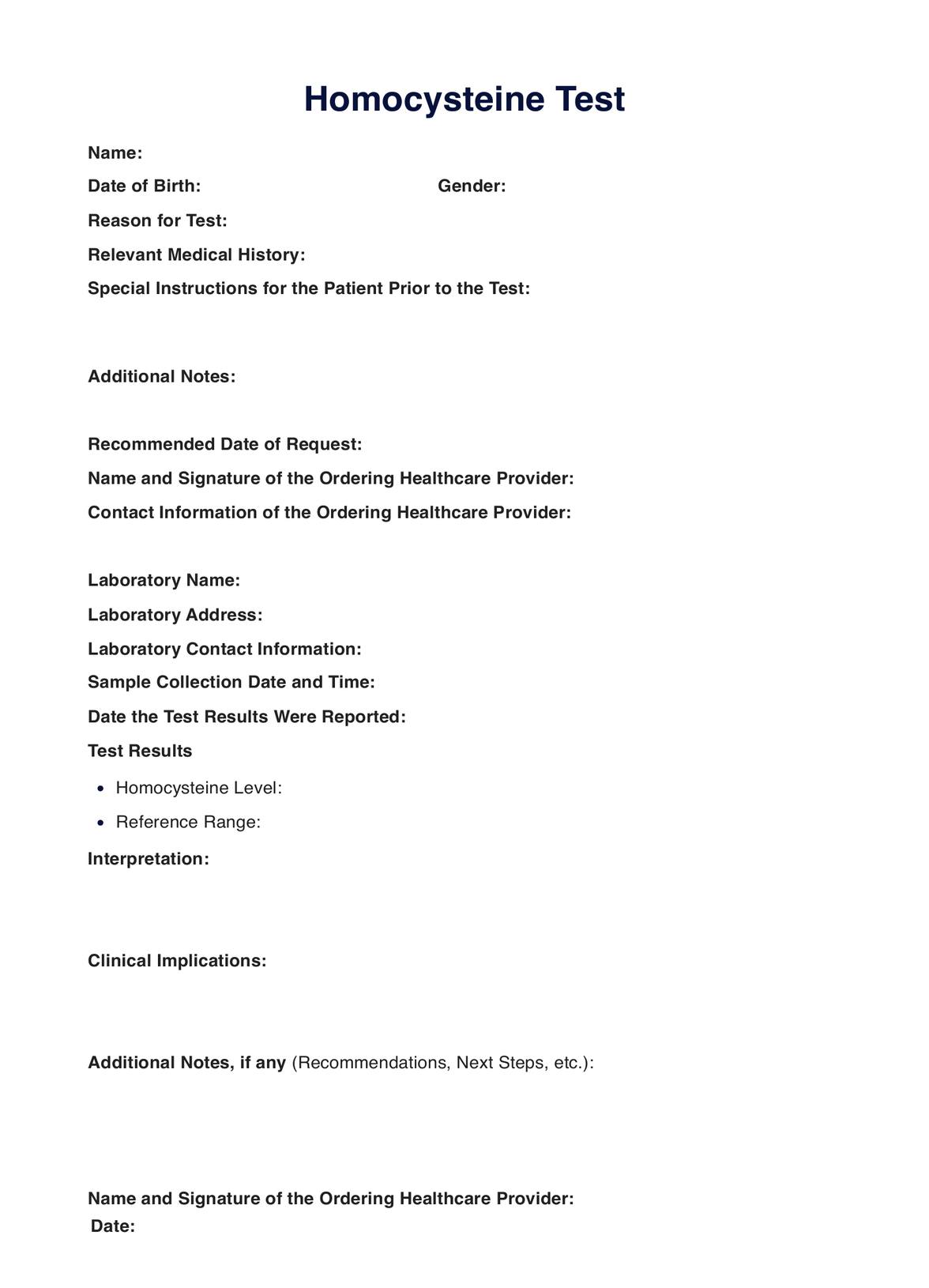General practitioners, nurses, and specialists like cardiologists, hematologists, genetic counselors, gastroenterologists, pediatricians, obstetricians, and gynecologists will most likely request a homocysteine test.

Learn more about the Homocysteine Test, its uses, result interpretation, etc. Click our short guide for more information and a free request form template.
General practitioners, nurses, and specialists like cardiologists, hematologists, genetic counselors, gastroenterologists, pediatricians, obstetricians, and gynecologists will most likely request a homocysteine test.
A homocysteine test is often used to identify any B vitamin deficiencies in a patient.
Collection for the homocysteine test can take a few minutes. However, results will only be available in 1-2 days.
EHR and practice management software
*No credit card required
Free
$0/usd
Unlimited clients
Telehealth
1GB of storage
Client portal text
Automated billing and online payments